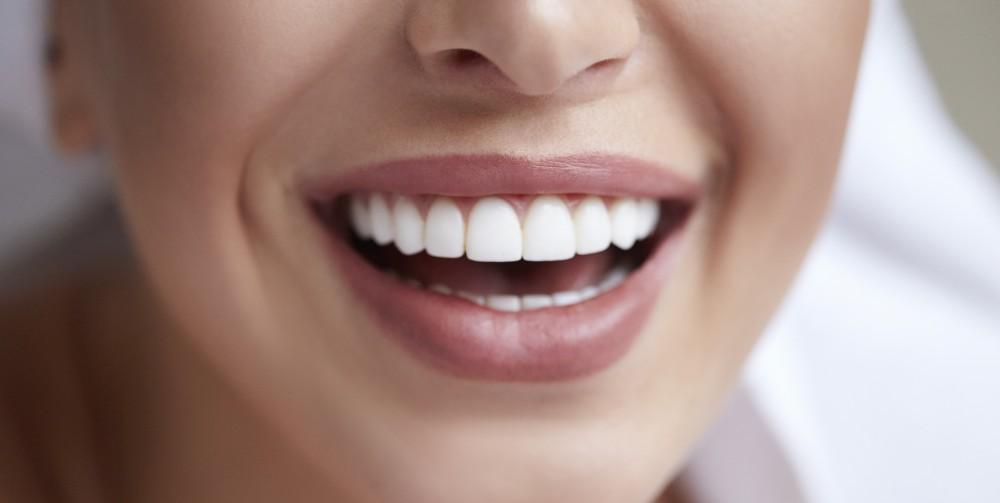
Improve Oral Hygiene: Essential Steps to Combat Gingivitis
“Gingivitis is a condition that affects the gums and can lead to serious dental health problems if left untreated. It is an inflammation of the gums caused by bacteria in the plaque buildup on the teeth. The most common symptom of gingivitis is red, swollen, and/or tender gums. Common signs of gingivitis include bad breath and bleeding gums when brushing or flossing. Gingivitis is a relatively common condition and can often be prevented with proper oral hygiene. Taking good care of your teeth and gums can help prevent and get rid of gingivitis. It is important to treat gingivitis promptly, as it can lead to more serious oral health issues if left untreated.

Causes of Gingivitis
Gingivitis is an inflammation of the gums around the teeth caused by a buildup of bacteria. Common causes of gingivitis include:
- Poor oral hygiene: Not brushing and flossing regularly will allow plaque and bacteria to build up around the gums, causing irritation.
- Certain medications: Drugs like anticonvulsants and calcium channel blockers can cause dry mouth, which increases the risk of gum disease.
- Hormonal changes: Puberty and pregnancy can cause an increase in hormones, which can lead to an increased risk of gingivitis.
- Smoking: Regular smoking can irritate the gums and increase the risk of gum disease.
- Medical conditions: Conditions such as diabetes, HIV, and autoimmune disorders can affect the health of the gums.
Risk Factors for Developing Gingivitis
Gingivitis is an inflammation of the gums caused by the buildup of plaque. Plaque is a bacterial film that accumulates on the teeth and around the gum line when dental hygiene isn’t adequate. Although anyone can develop gingivitis, some individuals are at a greater risk.
Risk factors for developing gingivitis include:
- Poor dental hygiene
- Smoking or chewing tobacco
- Medications that cause dry mouth
- Hormonal changes during puberty, pregnancy, and menopause
- Diseases such as diabetes and HIV
- Certain medical treatments such as chemotherapy and radiation therapy
If you have any of these risk factors, it’s important to take extra care of your oral health to avoid developing gingivitis.
Signs and Symptoms of Gingivitis
Gingivitis is a form of gum disease that typically begins with plaque accumulation along the gum line. If left untreated, this can lead to more serious health conditions. Being able to recognize the signs and symptoms of gingivitis is key to being able to get it treated before it progresses.
Common signs and symptoms associated with gingivitis include:
- Swollen and puffy gums that may be tender or painful to touch
- Red or purplish gums
- A bad taste in the mouth or ongoing bad breath
- Receding gum line or loss of teeth
- Visible pockets of pus between the teeth and gums
If you are experiencing any of these symptoms, it is important to consult your dentist or physician for proper diagnosis and treatment.
Prevention Tips to Avoid Gingivitis
Gingivitis can be avoided by following simple preventive measures. Good oral hygiene is the key to keeping your gums and teeth healthy and free from disease. Here are some tips for preventing gingivitis:
- Brush your teeth twice a day for two minutes each time, using fluoride toothpaste.
- Floss your teeth at least once a day.
- Clean between your teeth with dental picks, floss threaders, or interdental brushes.
- Quit smoking and avoid other forms of tobacco use.
- Increase your intake of vitamin C, as this helps to strengthen your gums and mouth tissue.
- Reduce your intake of sugary foods and drinks.
- Visit your dentist regularly for checkups and professional cleanings.
- If you wear dentures, take them out at night and clean them regularly.
Diagnosis
Gingivitis is usually diagnosed during a routine dental check-up. During the check-up, your dentist will examine your mouth for signs of gingivitis and take a medical history. They may also take X-rays to check for any underlying causes of gingivitis.
If your dentist suspects gingivitis, they may do a more thorough examination. This may include measuring the depth of pockets between your teeth and gums, as well as an analysis of your saliva. The measurements and analysis can help to determine the severity of your gingivitis.
Traditional Treatment for Gingivitis
If you suspect that you may have gingivitis, visit your dentist as soon as possible. Your dentist will be able to diagnose gingivitis and recommend the most appropriate treatment. Traditional treatment options for gingivitis typically involve medications, such as antibiotics or antimicrobial mouth rinses, which are used to reduce inflammation and fight off bacterial infection. In some cases, your dentist may recommend a scaling and root planing procedure, in which they use specialized tools to remove plaque and tartar deposits below the gum line.
Your dentist may also suggest changes to your oral hygiene routine to help get rid of the infection. This may include increasing the frequency and intensity of your brushing and flossing. Additionally, other lifestyle changes, such as quitting smoking and reducing alcohol consumption, may reduce the severity of the infection.
Home Remedies for Gingivitis
Gingivitis is a type of periodontal disease that can cause inflammation, irritation, and bleeding of the gums. It is important to treat gingivitis before it worsens and causes more serious health problems. Fortunately, there are several home remedies that can help to reduce the symptoms of gingivitis and even reverse this condition.
The following are some of the most effective home remedies for treating gingivitis:
- Saltwater rinse: Mix one teaspoon of salt with a cup of warm water and use it to rinse your mouth twice a day. This will help to reduce inflammation and kill any bacteria that may be causing your gingivitis.
- Tea tree oil: Tea tree oil has natural antibacterial properties which can help to reduce the presence of bacteria in the mouth, which can lead to gingivitis. You can add a few drops of tea tree oil to your toothpaste and brush your teeth with it, or mix it with water to use as a mouthwash.
- Oil pulling: Oil pulling is an ancient Ayurvedic practice that involves swishing oil, such as coconut oil, in your mouth for 10-20 minutes. This helps to pull out the bacteria that leads to gingivitis and improve the health of your gums.
- Hydrogen peroxide: Hydrogen peroxide is a powerful antiseptic that can help to reduce bacteria in the mouth and reduce the chances of developing gingivitis. Mix equal parts hydrogen peroxide and water and use it as a mouthwash twice a day.
- Cranberry juice: Cranberry juice is high in antioxidants which can help to fight off infections and reduce inflammation in the mouth that can lead to gingivitis. Drink a glass of cranberry juice daily to help reduce the symptoms of gingivitis.
In addition to these home remedies for gingivitis, it is important to maintain good oral hygiene habits. Brush your teeth at least twice a day and floss regularly to remove food particles and plaque from your teeth and gums. Also, make sure to visit your dentist regularly for professional cleanings and checkups.
Foods and Beverages to Avoid for Gingivitis
It is important to avoid certain foods and beverages that can worsen gingivitis. Sugary foods and drinks, such as candy and soda, can cause plaque build-up that can ultimately inflame the gums. Additionally, acidic foods and drinks, such as citrus fruits and juices, can weaken tooth enamel and make teeth more susceptible to decay. Coffee and tea can also irritate the gums and aggravate gingivitis, so it is best to limit their consumption.
Here is a list of foods and drinks that should be avoided to avoid worsening gingivitis:
- Candy
- Soda
- Citrus fruits and juices
- Coffee and Tea
- Sticky and chewy foods
- Alcoholic beverages
- Sugary and processed snacks
Oral Hygiene: Preventing Gingivitis
Good oral hygiene is essential to prevent gingivitis. Brushing and flossing your teeth daily, as well as regularly visiting your dentist for checkups and cleanings, are all important ways to maintain good oral hygiene and reduce your risk of developing gingivitis.
Here are some tips to ensure proper oral hygiene:
- Brush your teeth twice a day using a soft-bristled toothbrush.
- Gently brush the surface of your teeth and your tongue.
- Replace your toothbrush every three to four months.
- Use a toothpaste containing fluoride for added protection against plaque.
- Floss at least once a day to remove plaque from between your teeth and under the gum line.
- Use an antibacterial mouthwash to help reduce plaque and bad breath.
- Schedule regular visits to your dentist for checkups and professional cleanings.
Taking these steps will help you maintain healthy teeth and gums and reduce your risk of developing gingivitis.
Complications of Gingivitis
Gingivitis can lead to more serious oral health complications if it not addressed quickly and treated properly. If left untreated, gingivitis can progress to periodontal disease which is an infection that affects the tissues and bone that support our teeth. Periodontal diseases can cause tooth loss, inflammation, and other painful symptoms. It is important to treat gingivitis before it progresses to periodontal diseases.
In addition to periodontal diseases, gingivitis can also affect your overall health. Studies have shown that people with poor oral health are at a higher risk for heart disease, stroke, diabetes, and certain types of cancer. These health issues can be avoided by treating gingivitis early.
Gingivitis can also lead to bad breath, which can be embarrassing and interfere with social interactions. Bad breath may be a sign of gingivitis and should be taken seriously. It is important to visit the dentist to get a proper diagnosis and treatment plan for gingivitis.
Gingivitis is a type of gum disease that can cause redness, swelling, and irritation of the gums. If it is left untreated, gingivitis may lead to more serious gum diseases, including periodontitis. It is therefore important to get rid of gingivitis before it progresses and causes more severe problems. The best way to protect against gingivitis is to practice good oral hygiene, avoid certain foods and drinks, maintain a healthy diet and properly manage any pre-existing medical conditions. With proper care, gingivitis can be avoided or treated, ensuring healthy gums for many years to come.
Questions About How to Get Rid of Gingivitis
- Q: What is gingivitis?
A: Gingivitis is inflammation of the gums, caused by excess build-up of bacteria in the mouth due to poor oral hygiene. Without proper treatment, gingivitis can lead to gum disease. - Q: What are the most common causes of gingivitis?
A: Common causes of gingivitis include poor oral hygiene, smoking or chewing tobacco, diabetes, teeth grinding, hormonal changes, medications, and certain types of illnesses. - Q: What are the risk factors for developing gingivitis?
A: Risk factors for developing gingivitis include poor oral hygiene, smoking, diabetes, old age, hormonal changes, and certain types of illnesses. - Q: What are the signs and symptoms of gingivitis?
A: Common signs and symptoms of gingivitis include red, swollen, or tender gums, gums that bleed when brushing teeth, bad breath, receding gums, and loose teeth. - Q: What tips can help to prevent gingivitis?
A: To help prevent gingivitis, practice good oral hygiene by brushing twice a day, flossing daily, using an antiseptic mouthwash, and visiting the dentist regularly. Additionally, limit sugary and starchy foods, quit smoking, and try to manage any health conditions related to gingivitis. - Q: What are some traditional treatments for gingivitis?
A: Traditional treatments for gingivitis include antibiotics, medicated mouth rinses, scaling and root planing, and laser therapy. - Q: What are some home remedies for gingivitis?
A: Some natural home remedies for gingivitis include oil pulling, saltwater rinses, turmeric, neem bark, myrrh, hydrogen peroxide, and tea tree oil.
“
Leave a reply